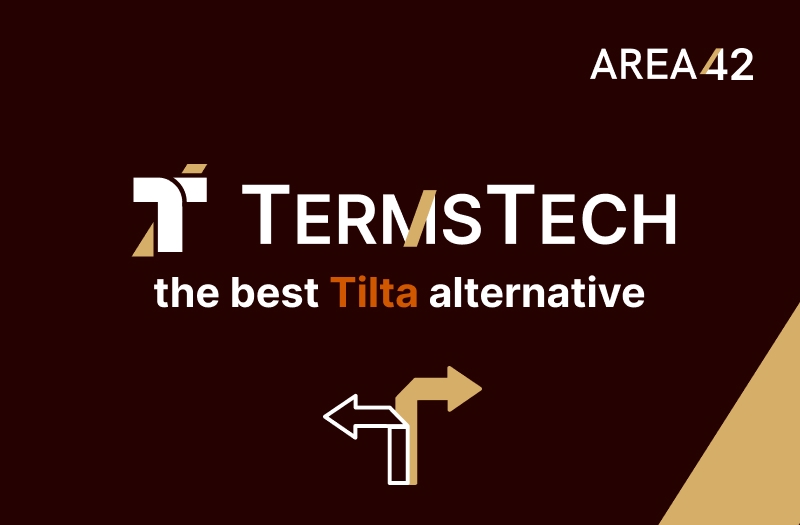Risk management strategies can vary widely among businesses, influenced strongly by their operational tenure and scale. Disparities in risk mitigation efforts across different company profiles is real.
AREA42’s European SMEs: Selling & Financial Health Report 2025 uncovers intriguing patterns linking the age and size of companies to their chosen methods of risk control, amongst other gems of insight comparing and contrasting B2B and B2C trade experiences and company financial health.
AREA42’s cutting-edge TradeTech approach – including the use of AI via machine learning – enable SMEs to navigate financial uncertainties with unprecedented precision and efficiency, setting them up for smoother and risk-savvy B2B trade.
Company size and age linked to risk mitigation
European SMEs: Selling & Financial Health Report 2025 reveals a correlation between the age and size of a company and the proactive measures taken to mitigate risk. Let’s look at some of the findings.
The report points out, ‘The older the bolder!’ The age of a company influences the mitigation action technique. For example, more than half (51%) of the companies that are 5 years old or less mitigate risk by using the ‘Start with small orders’ technique. However, companies older than 5 years only ‘Start with small orders’ only 33% of the time. Why such a big difference?
My takeaways regarding risk management are these:
- Older and larger companies exhibit a heightened commitment to risk mitigation, indicative of their past encounters with credit risk and their acknowledgment of it as a significant threat to liquidity. Larger enterprises possess greater resources to address credit risk, allowing them to prioritise risk management alongside their core business activities.
- Conversely, smaller companies, particularly those in their early stages, allocate less attention to credit risk. This may be due to a lack of prior issues, lack of expertise, or constraints on time and resources. Many SMEs operate faced with this disadvantage.
SMEs often use restrictive risk mitigation tools
The report shows that SMEs that sell tend to mitigate trade risk using these techniques:
- First orders paid for in advance
- Starting with small orders
- Using a letter of credit
- Using payment for documents
- Ensuring awareness of the consequences of late (or non-) payment
- Payment in stages
- First payment covering the actual costs
- Setting up direct debit
It is noteworthy that these risk mitigation tools employed by small and medium-sized enterprises (SMEs) are often restrictive and contribute to the creation of trade barriers. This complexity poses a considerable challenge for SMEs seeking to navigate the market successfully.
Given that risk management is not a primary competency for most SMEs, the selection of restrictive risk mitigation tools may be suboptimal, resulting in either excessive trade restrictions or insufficient measures for high-risk businesses.
AREA42 alleviates trade barriers
With that context and challenge in mind, how does AREA42 fit in and what are we aiming to achieve? The mission of AREA42 is to alleviate these trade barriers by offering a diverse range of financial products. Regarding risk management, by assuming credit risk and ensuring immediate liquidity for SMEs, AREA42 allows these enterprises to concentrate on their core activities without the burden of credit risk and cash flow concerns.
A concrete example of this in action is TermsTech, our B2B payment terms solution. TermsTech enables merchants and marketplaces to offer a Buy Now, Pay Later solution to B2B buyers creating a win-win-win: the buyers free up cash flow and are able to purchase with payment terms, the merchants are able to sell more and satisfy their customers, while marketplaces facilitate trade more effectively and efficiently for their sellers and buyers.
And, through this process, AREA42 takes on the risk management responsibilities, freeing up the SMEs who don’t specialise in this competency to focus on their core business.
Machine learning and decisioning for risk
How do we do it? AREA42 employs advanced machine learning models and contemporary decisioning frameworks, supported by robust data infrastructure. This enables the organisation to harness a multitude of data sources, facilitating a swift, accurate, and scalable assessment of credit and fraud risk.
This efficient process not only enables the selection of suitable risk mitigating measures but also enhances the organisation’s ability to assume and manage risk more effectively on behalf of its clients.
With a focus on leveraging advanced technology to ease the burden of risk management for SMEs, AREA42 emerges as a pivotal player in facilitating smoother B2B trade operations.
Contact us

Hi, I’m Wouter!
I’d love to discuss how we can help your operation with our working capital solutions. I’m looking forward to meeting you and answering all of your questions about AREA42.




